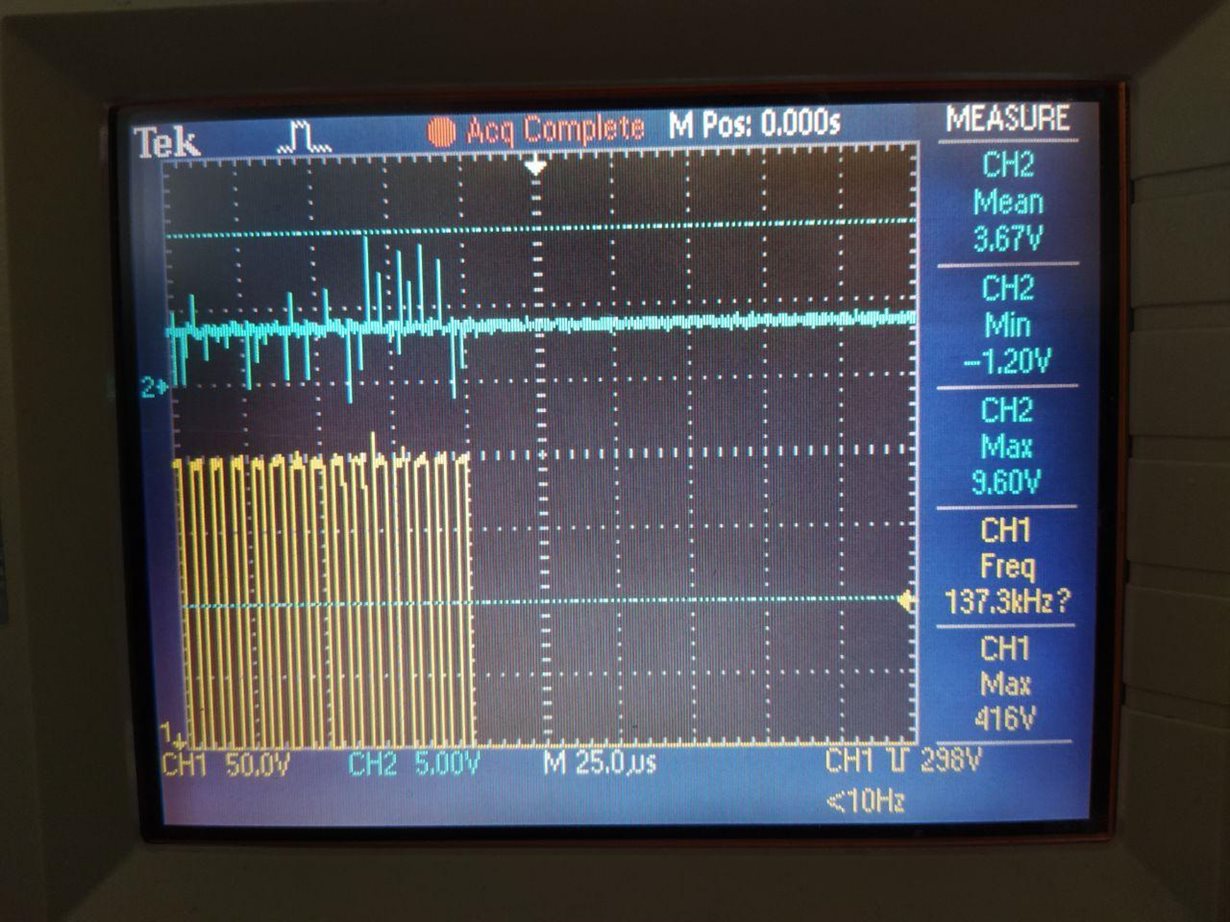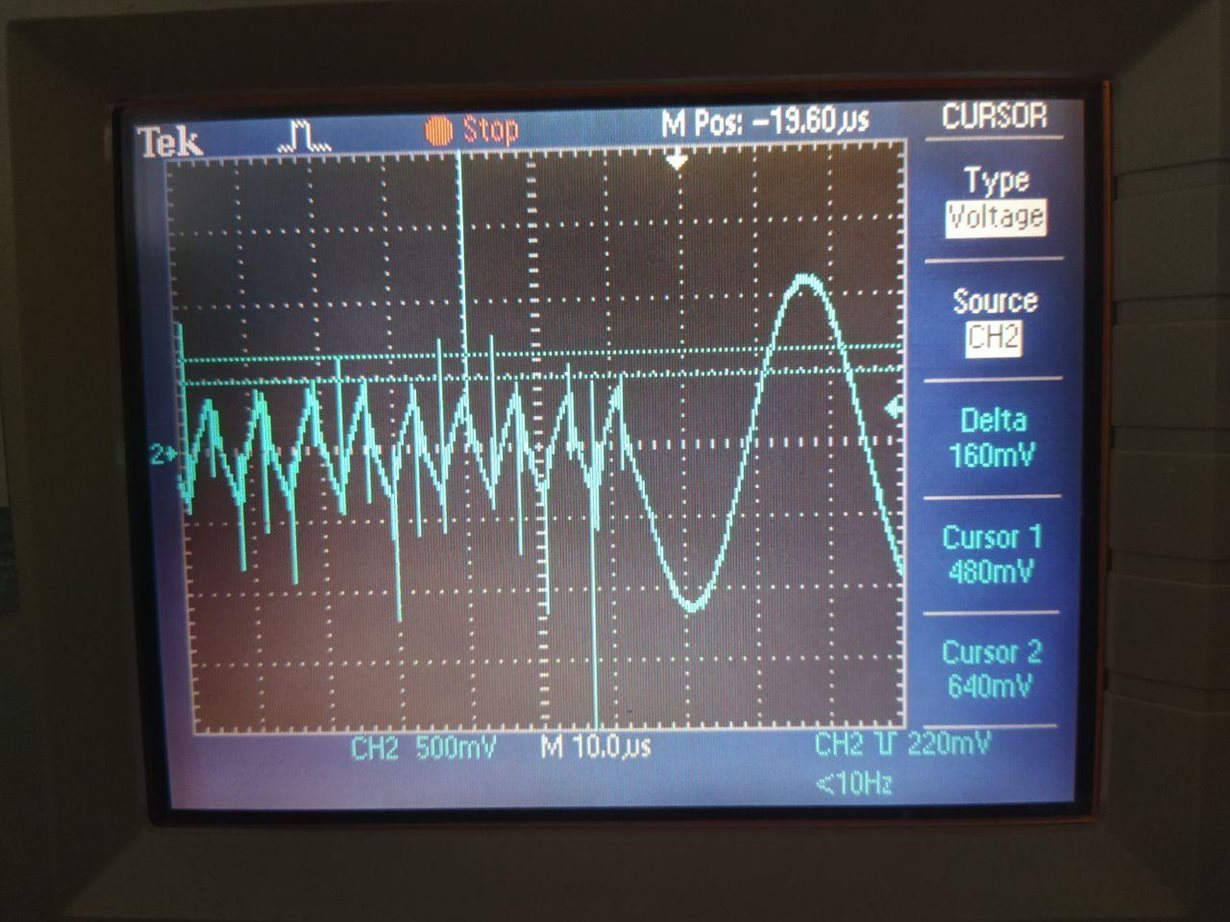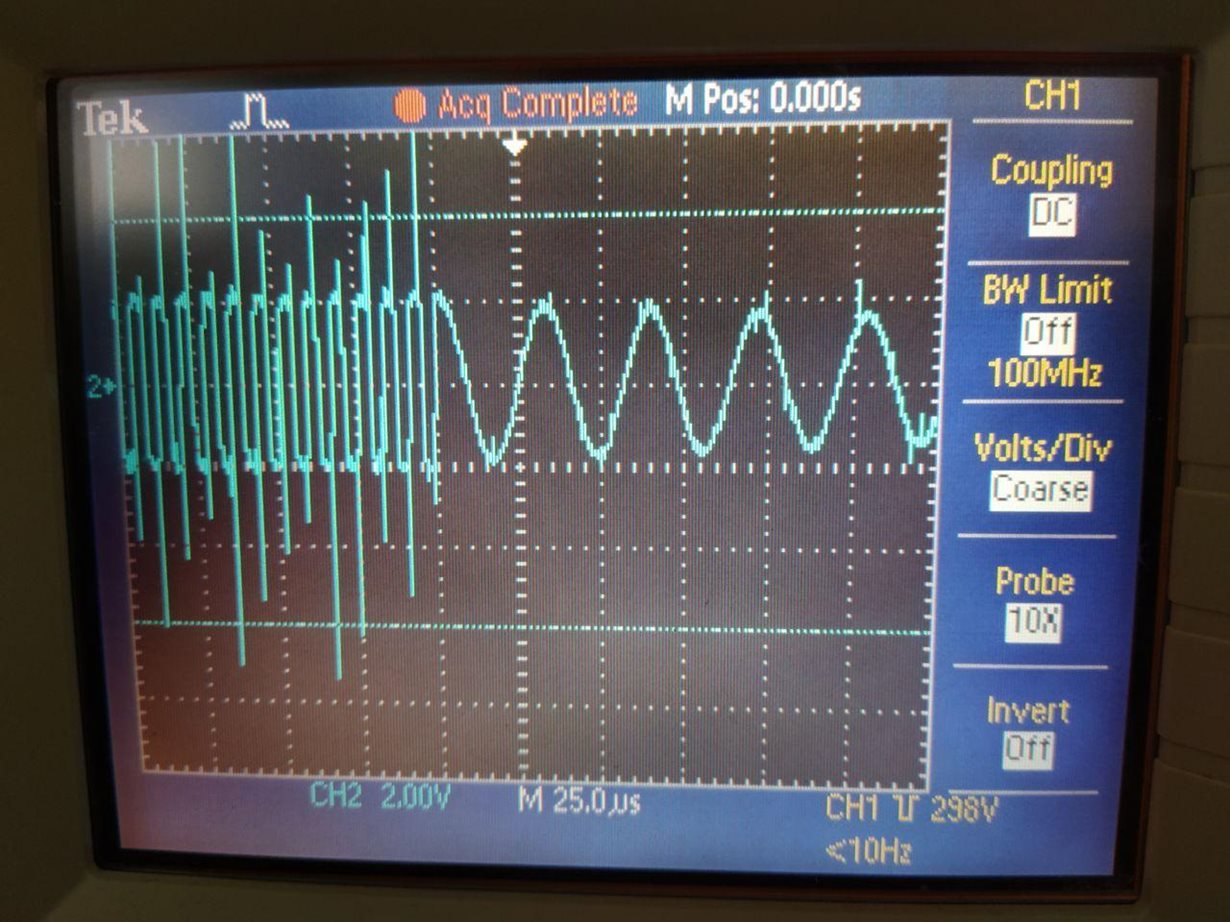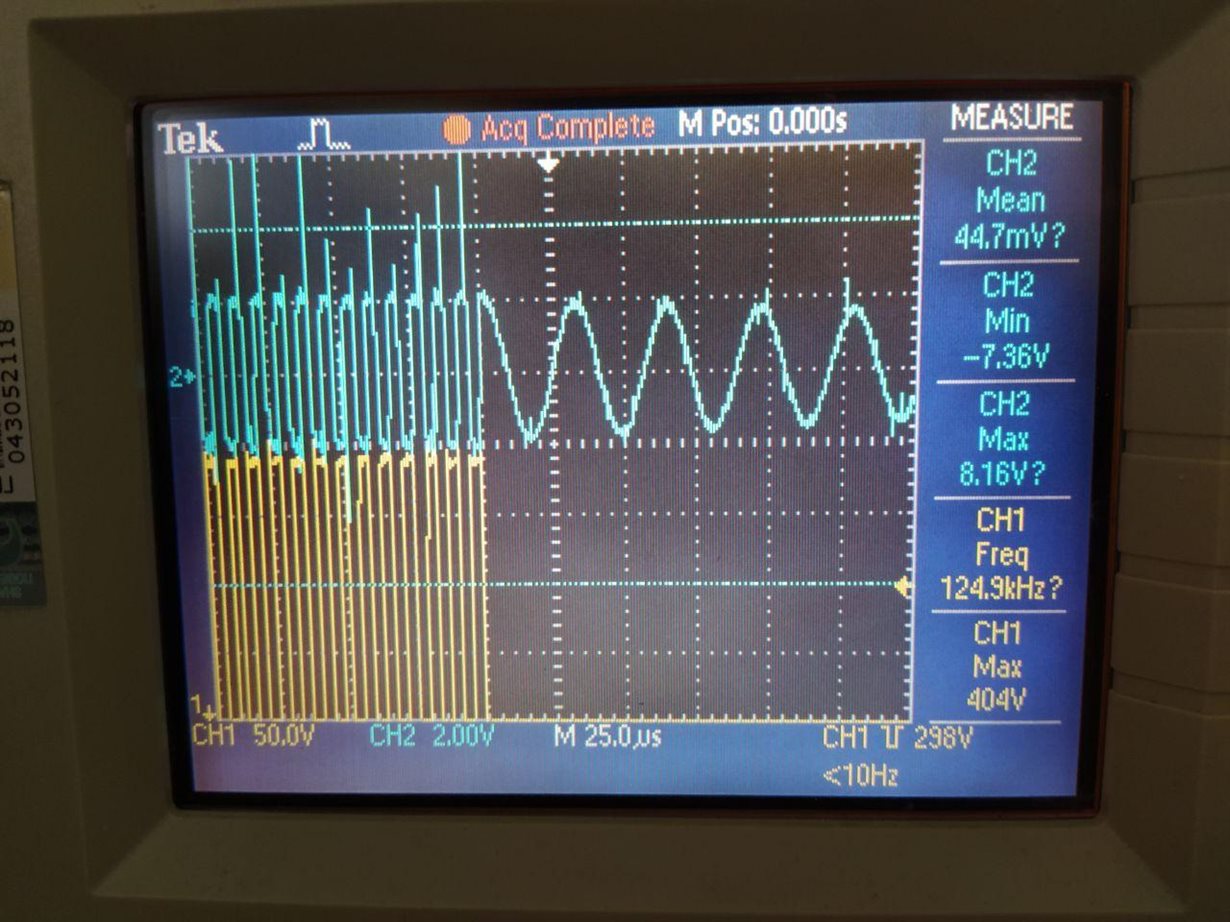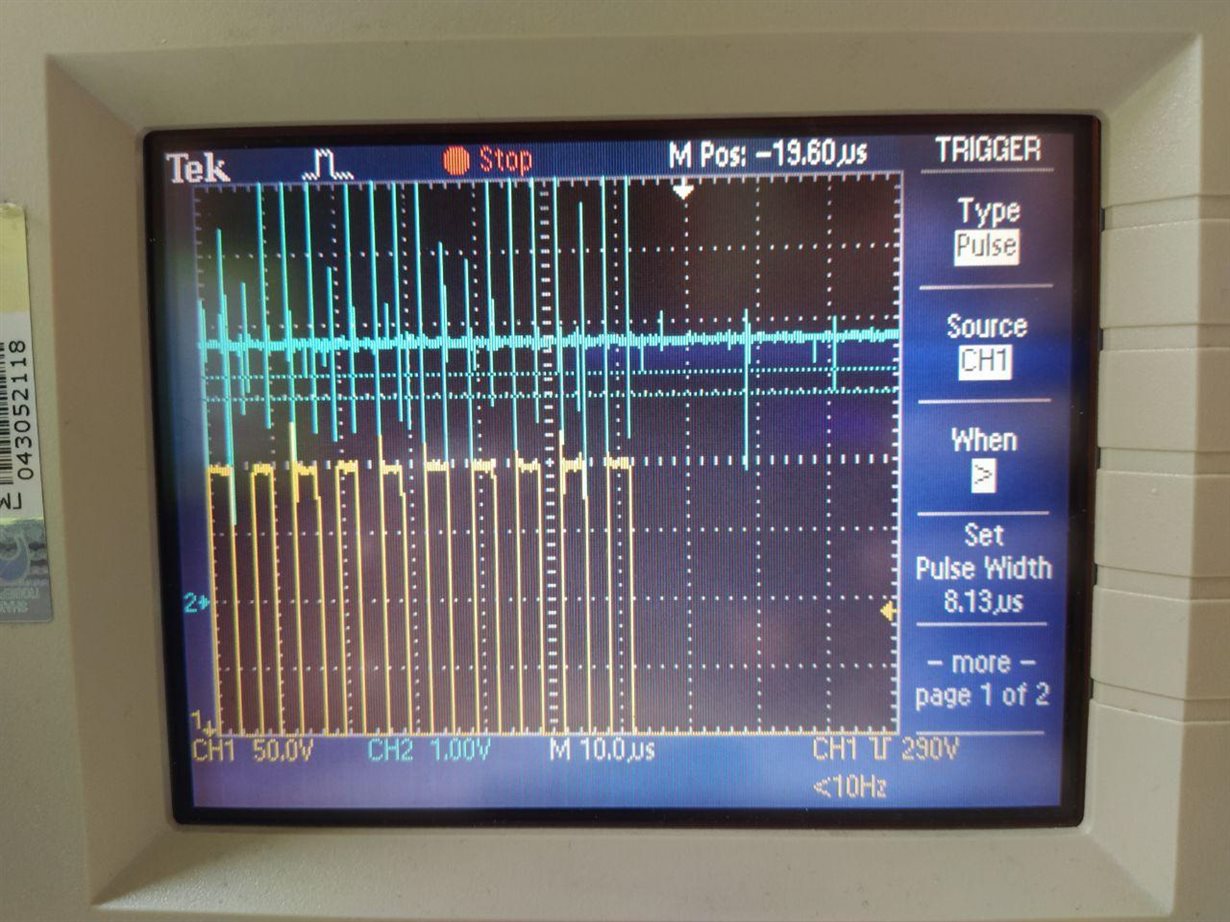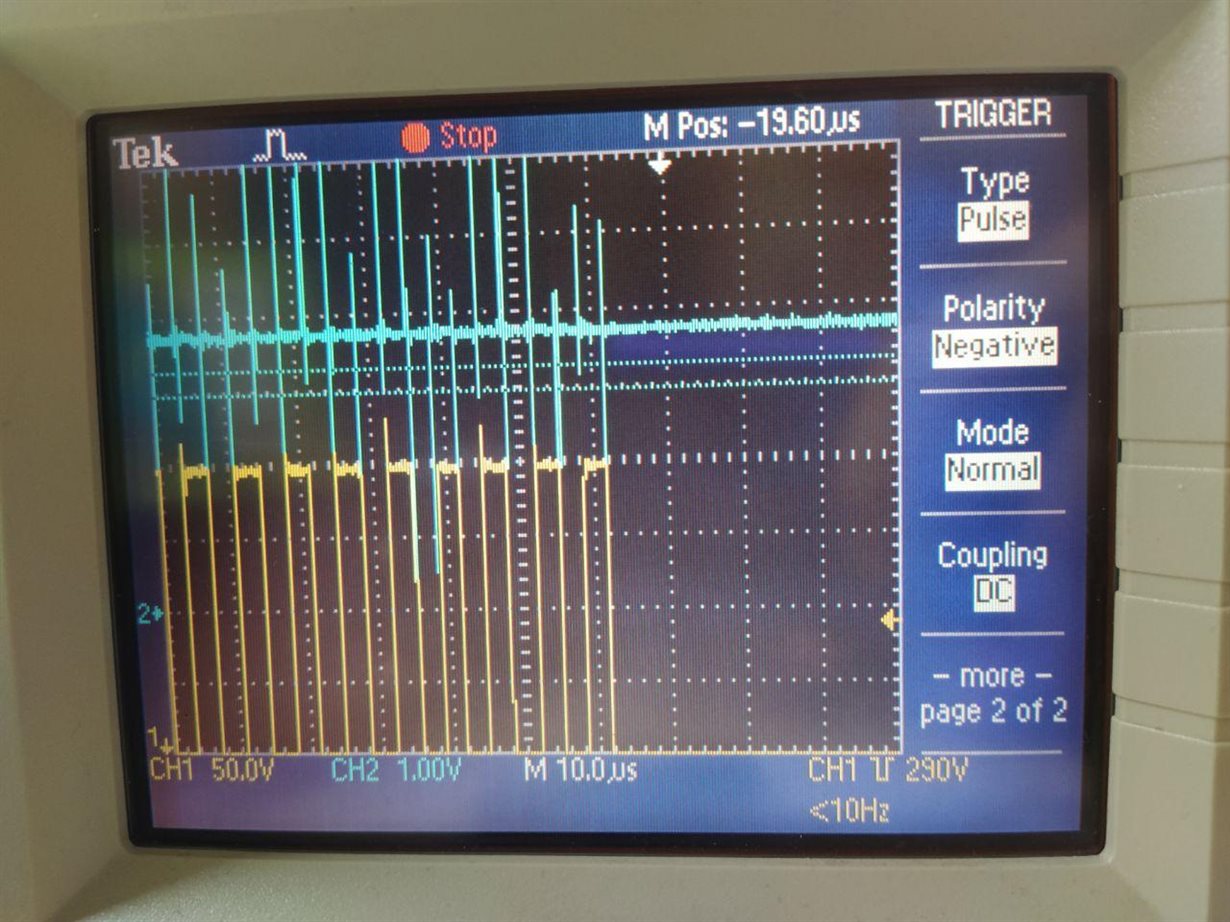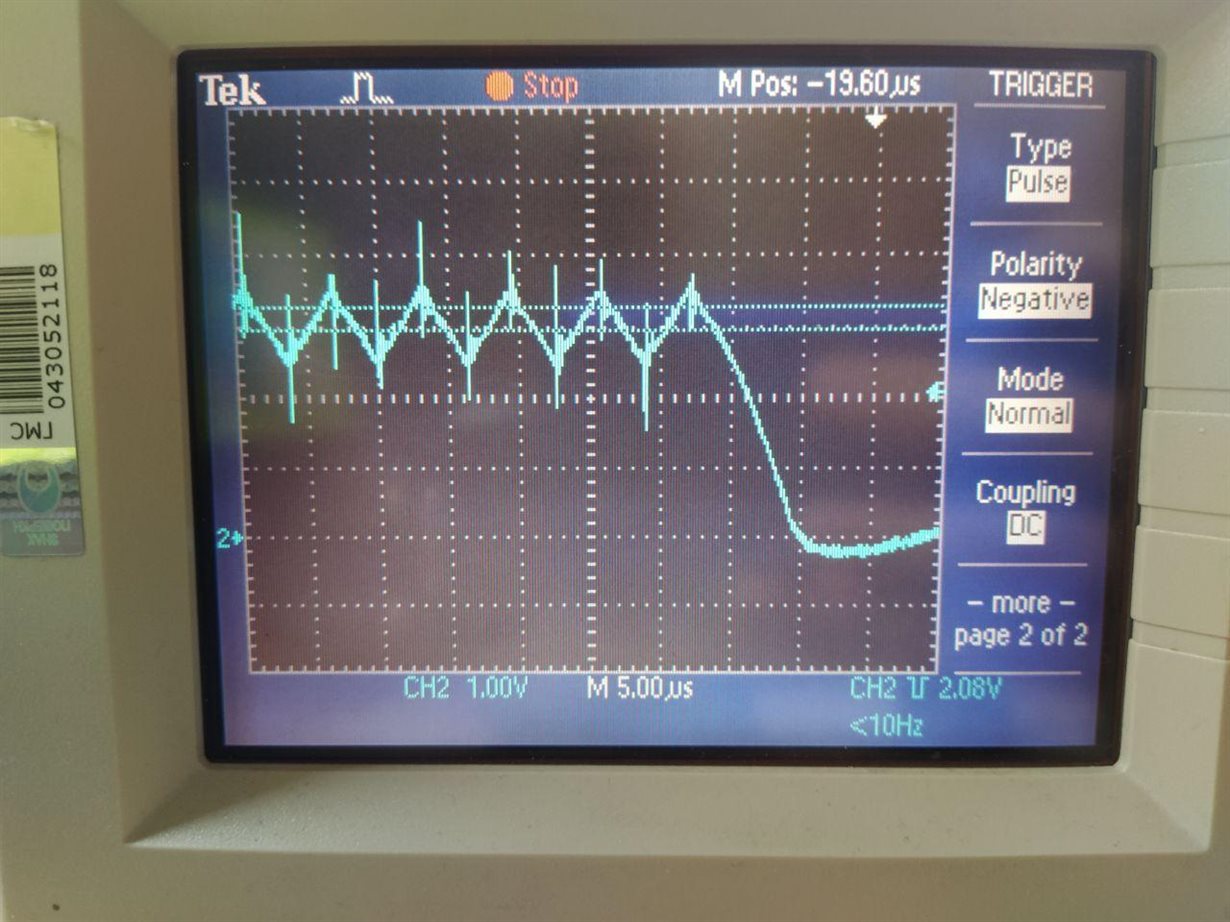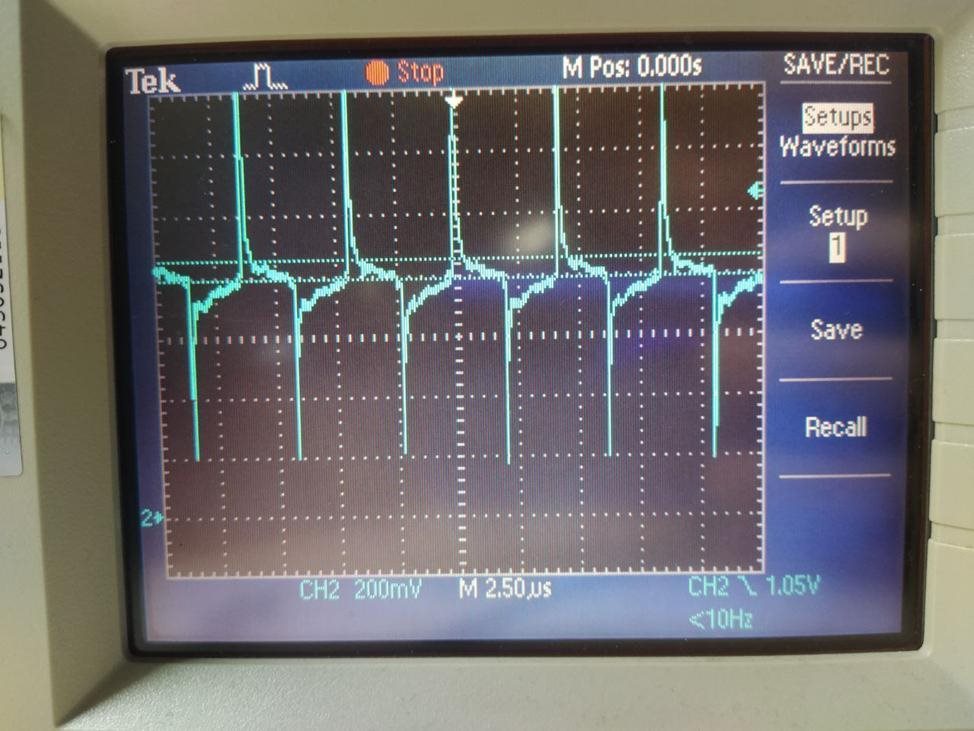Other Parts Discussed in Thread: TIDA-010015, LMV431, TL431, TLVH431
Hi!
I am trying to develop PSU that converts 220V to 48V, using a design similar to TIDA-010015. I have a problem of instability of PSU - it starts up fine, does switching fine, but may shutdown unexpectedly in a few minutes under no load or under small load (1A). Under small load it turns off faster (though there is not exact time for this). Then it shuts down similar to any fault - switching stops, output voltage drops. Interestingly, it does not get turned on after. output voltage stays down, thougn 400V from PFC is present and UCC256301 kind of tries to turn on - I see voltage rise on VCC pin, I see long pulse on LO pin, but switching does not start again.
When in such condition UCC256301 stops switching, I also see a sudden change in HV pin series resistor current (measuring voltage on one 1.5 kOhm resistor of three resistors) - curent from less than 1 mA will change to about 10 mA. I can't be sure if it happens before the switching stops, at the same time or right after as I don't know how to synchronize switching with this current. It happens at around the same time, so I assume it to happen right before switching stops.
My undestanding of what's happening: in one random moment of working UCC256301 somehow decides that input voltage 220V absent (even though it is still present) and starts discharging X-capacitor, almost instantly overheats and goes out with OTP fault (wild guess). After that it can't restart due to that overheating, which is renewed by charging VCC voltage (and current through HV pin). I can't verify overheating due to being afraid to short something on PCB without a way to fix firmly thermocouple on UCC256301.
I also see zero crossing on HV pin (measuring voltage between HV and GND) while UCC256301 is still switching, happening once in around 700 ms (due to the test current, which is happening with that period, according to datasheet). But if I look at the current on one of HV pin series resistors, I see always the same (kind of) triangular signal as on the left side of the picture above. But perhaps the change in current once in 700 ms is just too small for me to see.
So, I guess, my questions are:
1. Is there any activity on HV pin during or after any FAULT condition? Just so we could rule out the possibility of X-cap discharge function not being the cause of PSU shut down.
2. What could be the reasons for X-cap discharge function happening wuth input voltage still present? If that is the case at all.
I am also aware of other versions of UCC25630, which do not have this X-cap discharge function, but it would be nice to have it working as it is, without changing to other IC.






